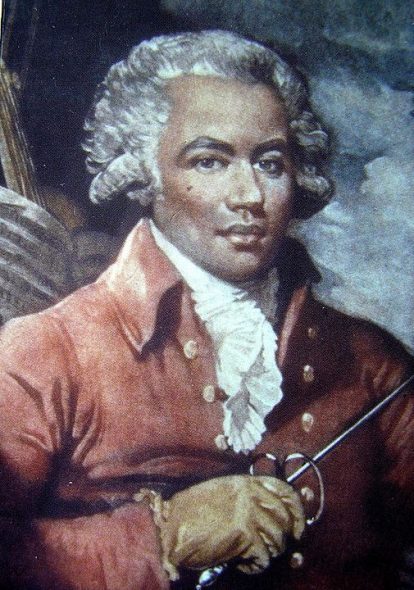Impressionism Captured in Music
Milwaukee Musaik performs four interesting works you've probably never heard.
Milwaukee Musaik, a chamber ensemble drawing largely from Milwaukee Symphony Orchestra players, offers a wide range of classical choices exploiting the diversity of performers it can select. Next Thursday evening’s program, Fresh Impressions, offers rarely heard works, often bringing together chamber orchestra-sized resources.
Several composers will be new to most audience members.
A familiar work by Claude Debussy will be paired with another impressionist composer, Florent Schmitt.
Impressionist Debussy was commissioned by Pleyel, a manufacturer of harps, to write a work that showcased a new version of the instrument that doubled the strings, removing the need for pedals.
Dances for Chromatic Harp and String Orchestra (1904) explores all of what a harp can do. The Pleyel harp was not well received by harpists, leaving an attractive composition that can be very challenging on a contemporary harp. Featured in this harp concerto, Kelsey Molinari comments, “With the double-strung harp, all of the notes were laid out in 78 strings. On the modern pedal harp, there are 47 strings and seven pedals to achieve the same chromaticism. Imagine playing a violin and one string is taken away.”
There are two sections: Danse sacrée and Danse profane, and the work is sometimes billed accordingly. Critic Kai Christiansen offered this take on the Debussy work:
The contrast suggested by “sacrée” and “profane” is that between spirit and body, ethereal and corporeal, heaven and earth. The first dance is infused with an ancient grace, hovering, illuminated and awe-inspiring. The second dance begins with a gentle waltz of pristine simplicity. With the harp creating sparkles like a mirror ball, the strings swell into a swirling waltz etched with finely wrought harp figurations, passing reverie and swooning clouds of enchanted atmosphere.
In 20th-century Paris, Schmitt studied with Gabriel Fauré and Jules Massenet and knew Ravel, Stravinsky, La Falla, and others. He spent more time as a music critic than a composer. His works appear to have been forgotten in the crowd of other stellar compositions.
Milwaukee Musaik will play Schmitt’s Suite en Rocaille (1937), inspired by a French decorative style using elaborate decor on furniture and interiors during the 18th century reign of Louis XV. This impressionist piece features flute, harp, and string trio. In four movements, the piece is filled with energy, sweeping melodies, wit, dance rhythms, and elegance.
The concert will add a full complement of strings for two other works written for the chamber orchestra alone. Sasha Mandl will conduct.
The first is by Joseph Bologne Chevalier de Saint-Georges (1745-1799), who was born to a wealthy plantation owner and the owner’s slave in the French colony of Guadeloupe. His father brought him to France, where he proved to be a true polymath. Known initially for his skills in fencing and the military, his talent as a violinist led to a role as director of the Concert de la Loge Olympique orchestra. He composed in a classical style similar to Mozart, writing operas, symphonies, chamber music, and concerti.
Bologne wrote fourteen violin concertos designed to highlight his virtuosic skill. Jeanyi Kim will perform the solo role in Bologne’s Violin Concerto in C major, Op. 3, No. 2. (c. 1773).
The young prodigy Felix Mendelssohn is represented in this concert by one of the twelve string symphonies he wrote at age 12-14. Milwaukee Musaik will perform one of his best, String Symphony No. 7 (1821-2.) Mandl finds elements of Corelli, Mozart, Haydn, C.P.E Bach, and J.S. Bach in this work. Mandl writes, “Few composers in the classical canon have come close to a ‘perfect’ balance between length, lyricism, virtuosity and natural creativity; Mendelssohn is one of them.”
Whether mixed ensemble groupings or as a chamber orchestra, Milwaukee Musiak allows the audience to hear the contributions of all players. This opportunity is important to the symphony players as well.
Milwaukee Musiak will perform at 7:00 p.m. on Thursday, Nov. 17, at the Woman’s Club of Wisconsin at 813 E. Kilbourn Ave., Milwaukee, WI 53202. Tickets may be purchased online.
The Milwaukee Musaik season continues on Feb. 7 with IT’S ABOUT TIME!, Musaik artists will perform an unforgettable smorgasbord of quirky time-inspired works.
If you think stories like this are important, become a member of Urban Milwaukee and help support real, independent journalism. Plus you get some cool added benefits.
Preview
-
PianoArts Festival Features Rising Stars
 May 28th, 2024 by Michael Barndt
May 28th, 2024 by Michael Barndt
-
Four Nations Ensemble Goes For Baroque
 May 13th, 2024 by Michael Barndt
May 13th, 2024 by Michael Barndt
-
Mozart on Prospect Avenue
 May 9th, 2024 by Martha Brown
May 9th, 2024 by Martha Brown





















